
Integrative Organismal Biology
Scope & Guideline
Advancing Knowledge Through Interdisciplinary Insights
Introduction
Aims and Scopes
- Morphological and Mechanical Studies:
The journal publishes research that investigates the morphological diversity and mechanical properties of organisms, exploring how these traits relate to ecological functions and evolutionary adaptations. - Evolutionary Biology and Adaptation:
A core focus is on the evolutionary processes that shape organismal traits, including studies on sexual dimorphism, modularity, and the evolutionary history of diverse taxa. - Ecological Interactions and Adaptations:
Research that examines the interactions between organisms and their environments, including predator-prey relationships and adaptations to environmental stressors, is prominently featured. - Comparative Anatomy and Physiology:
The journal promotes studies that utilize comparative methods to understand anatomical and physiological differences across species, contributing to broader insights into organismal biology. - Technological Innovations in Biological Research:
Integrative Organismal Biology encourages the use of cutting-edge technologies, such as 3D modeling and computational methods, to enhance the understanding of biological structures and functions.
Trending and Emerging
- Mechanistic and Functional Morphology:
There is a growing trend towards studies that investigate the mechanisms behind morphological traits and their functional implications in ecological contexts, highlighting the interplay between form and function. - Environmental Adaptation and Resilience:
Research focusing on how organisms adapt to changing environmental conditions, including climate change impacts and habitat alterations, is increasingly prominent, reflecting global ecological concerns. - Interdisciplinary Approaches to Organismal Biology:
The use of interdisciplinary methodologies, combining biology with engineering, computational modeling, and advanced imaging techniques, is on the rise, fostering innovative research that transcends traditional boundaries. - Behavioral Ecology and Physiology:
Publications exploring the behavioral responses of organisms to ecological pressures, alongside physiological adaptations, are gaining traction, underscoring the importance of behavior in understanding organismal biology. - Conservation and Applied Biology:
Research that connects organismal biology with conservation efforts, focusing on the implications of biological research for species preservation and ecosystem management, is increasingly featured in the journal.
Declining or Waning
- Traditional Morphometrics:
While geometric morphometrics remains a popular tool, traditional morphometric analyses that rely solely on linear measurements are appearing less frequently, as researchers increasingly adopt more advanced methodologies. - Basic Descriptive Studies:
There is a noticeable decline in publications focused solely on basic descriptive studies of organisms, as the journal leans towards integrative research that combines multiple disciplines and approaches. - Historical Phylogenetics:
Research that predominantly focuses on historical phylogenetic analyses without integrating ecological or functional perspectives has become less prevalent, suggesting a shift towards more integrative and applied evolutionary studies.
Similar Journals

JOURNAL OF EVOLUTIONARY BIOCHEMISTRY AND PHYSIOLOGY
Exploring the Nexus of Biochemistry and Evolutionary DynamicsJOURNAL OF EVOLUTIONARY BIOCHEMISTRY AND PHYSIOLOGY, published by PLEIADES PUBLISHING INC, is a pivotal periodical that delves into the intricate relationships between biochemical processes and evolutionary dynamics. With its ISSN 0022-0930 and E-ISSN 1608-3202, this journal serves as a comprehensive platform for researchers, professionals, and students dedicated to understanding the physiological adaptations and biochemical mechanisms influenced by evolutionary pressures. Although it is not an open access journal, it offers valuable insights across its historically significant coverage spanning from 1972 to 2017, making it an essential resource for those working in agricultural, biological, and molecular sciences. Despite its current Scopus rankings revealing limited visibility within its fields, the journal remains committed to fostering scholarly dialogue and advancing knowledge in the realm of evolutionary biochemistry, especially for those exploring the ecological, genetic, and integrative physiological aspects of life.
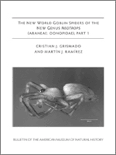
BULLETIN OF THE AMERICAN MUSEUM OF NATURAL HISTORY
Illuminating the complexities of ecology and biology.BULLETIN OF THE AMERICAN MUSEUM OF NATURAL HISTORY, published by the American Museum of Natural History, represents a cornerstone of scholarly communication in the fields of Agricultural and Biological Sciences and Ecology. With an impressive impact factor highlighted by its Q1 quartile rankings in both categories, the journal publishes high-quality, peer-reviewed research that significantly contributes to the understanding of natural history. Researchers will find this journal indispensable as it covers a diverse range of topics, providing insights that drive ecological research and biological discovery forward. Although not open access, the Bulletin is widely available through institutional subscriptions, making it accessible to both established professionals and students eager to stay informed about the latest advancements in the field. Its commitment to advancing knowledge from 1996 to the present ensures that it remains relevant and highly regarded within the scientific community.
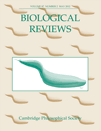
BIOLOGICAL REVIEWS
Fostering collaboration in the pursuit of biological excellence.BIOLOGICAL REVIEWS is a prestigious academic journal published by Wiley, focusing on the expansive fields of Agricultural and Biological Sciences and Biochemistry, Genetics and Molecular Biology. Established in 1924, the journal has upheld its reputation for over a century, advancing both theoretical and applied research aimed at addressing critical biological challenges. With an impressive 2023 Q1 ranking in both its primary categories and a Scopus ranking that places it among the top journals worldwide—ranked #2 in Agricultural and Biological Sciences and #8 in Biochemistry—BIOLOGICAL REVIEWS is at the forefront of scientific inquiry. Researchers, professionals, and students will find a wealth of knowledge in its comprehensive review articles, providing valuable insights into the latest findings and methodologies in the biological sciences. Although not an Open Access journal, its rigorous peer-review process ensures the dissemination of high-quality, impactful research, contributing to advancements in the field while fostering a collaborative scientific community.
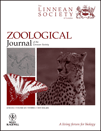
ZOOLOGICAL JOURNAL OF THE LINNEAN SOCIETY
Advancing the frontiers of zoological research.Zoological Journal of the Linnean Society, published by Oxford University Press, stands as a prestigious vessel for scholarly discourse in the fields of Animal Science and Ecology. With an ISSN of 0024-4082 and E-ISSN 1096-3642, this journal has an illustrious history dating back to its inception in 1866, and has consistently contributed groundbreaking research that shapes our understanding of zoology and evolutionary biology. Operating out of the United Kingdom, the journal boasts an impressive Q1 ranking in both Animal Science and Zoology and Ecology, Evolution, Behavior and Systematics, positioning it among the top tier of its category. With a significant presence in the academic landscape, the journal ranks 24th among 490 in Animal Science and 97th among 721 in Ecology, reflecting its impact and relevance in the field. Although it is not an open access journal, the wealth of knowledge it offers is invaluable for researchers, professionals, and students alike, aiding in the advancement of zoological sciences.

PLANT SYSTEMATICS AND EVOLUTION
Cultivating Insights into Plant BiodiversityPlant Systematics and Evolution is a prestigious journal published by Springer Wien, dedicated to advancing research within the fields of plant taxonomy, evolution, and ecology. With its ISSN 0378-2697 and E-ISSN 1615-6110, this journal has been pivotal in shaping the scientific landscape since its inception in 1974. Based in Austria, it occupies a significant position in the academic community, being ranked in the Q2 quartile in both Ecology, Evolution, Behavior and Systematics and Plant Science as of 2023. This high-impact journal is recognized for its rigorous peer-review process and is indexed among the top publications in its category, holding a Scopus rank of #176 out of 516 in Plant Science and #252 out of 721 in Ecology, highlighting its relevance and quality in the research community. Although it does not currently offer open access, the journal is committed to making significant contributions to the understanding of plant biodiversity and evolutionary processes. This makes it an essential resource for researchers, professionals, and students aiming to know the latest developments in the study of plant systematics and evolution.

COMPARATIVE BIOCHEMISTRY AND PHYSIOLOGY A-MOLECULAR & INTEGRATIVE PHYSIOLOGY
Shaping the Future of Biochemical and Physiological Discovery.Comparative Biochemistry and Physiology A-Molecular & Integrative Physiology, published by Elsevier Science Inc, serves as a pivotal platform for cutting-edge research in the fields of biochemistry, physiology, and animal sciences. The journal, holding an esteemed presence with an ISSN of 1095-6433 and E-ISSN 1531-4332, spans a remarkable history of contributions since its inception in 1960, showcasing significant findings up to 2024. As a Q1 quartile journal in Animal Science and Zoology and featuring competitive rankings across various biochemistry and physiology disciplines, it stands out as a leading resource for both established researchers and emerging scholars alike. The journal is committed to publishing high-quality, peer-reviewed articles that deepen our understanding of molecular and integrative physiology, playing an essential role in advancing scientific knowledge and fostering interdisciplinary collaboration. With access options that prioritize the dissemination of impactful research, Comparative Biochemistry and Physiology continues to shape the dialogue within these dynamic fields.

BRITTONIA
Advancing the Science of Plant LifeBRITTONIA, published by Springer, stands as a reputable journal dedicated to advancing the fields of botany and plant sciences. With a storied history dating back to 1931, this journal has evolved to embrace contemporary research spanning various aspects of plant biology, ecology, and systematics. Focusing on a comprehensive analysis of both ecological interactions and plant systematics, BRITTONIA plays a crucial role in disseminating knowledge among researchers and professionals committed to understanding plant life and its environmental contexts. Despite its open access status being currently unavailable, the journal ensures wide accessibility through institutional subscriptions. In the latest rankings, it proudly holds a Q2 category in Plant Science and a Q3 category in Ecology, Evolution, Behavior, and Systematics, indicating its growing influence and academic rigor. Researchers and students alike will find BRITTONIA an essential resource for the latest findings and discussions in plant sciences.
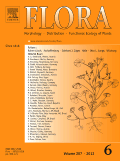
FLORA
Innovating Research in Ecology and Plant StudiesFLORA is a distinguished journal published by Elsevier GmbH, focusing on the realms of Ecology, Plant Science, and Evolutionary Biology. Established in 1975, this journal has been a vital platform for researchers and professionals, disseminating groundbreaking findings and insights relevant to the plant sciences. With an impressive impact factor and a current Scopus ranking placing it in the second quartile (Q2) across multiple categories, FLORA is recognized as a critical resource for advancing knowledge in its respective fields. The journal publishes both traditional research articles and significant review papers, ensuring a broad spectrum of academic engagement. Although not open access, FLORA remains committed to enhancing the scientific discourse and fostering collaboration among scholars worldwide. Researchers seeking to enrich their understanding of ecological dynamics and plant biology will find FLORA to be an essential addition to their academic repertoire.

Arthropod Systematics & Phylogeny
Advancing arthropod knowledge through systematics and phylogeny.Arthropod Systematics & Phylogeny is a pivotal journal published by the SENCKENBERG NATURHISTORISCHE SAMMLUNGEN DRESDEN, MUSEUM TIERKUNDE in Germany, dedicated to advancing the understanding of arthropod systematics, phylogenetics, and evolutionary biology. With an ISSN of 1863-7221 and an E-ISSN of 1864-8312, this journal has established itself as a reputable source for high-quality research, evident by its ranking in the Q1 category for Insect Science and Q2 in Genetics. Covering a spectrum of subjects within the realms of agricultural and biological sciences, it caters to a diverse audience of researchers, professionals, and students eager to explore the intricate relationships and evolutionary histories of diverse arthropod taxa. The journal has been consistently publishing impactful studies since its inception in 2009, with ongoing contributions expected to bolster its presence in the academic community through 2024 and beyond. Although it currently does not offer open access options, its rich content serves as a valuable resource for those passionate about entomology and genetics, fostering collaboration and innovation in an important area of biological research.
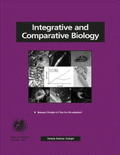
INTEGRATIVE AND COMPARATIVE BIOLOGY
Empowering Discovery in Integrative Biology.INTEGRATIVE AND COMPARATIVE BIOLOGY, published by Oxford University Press Inc, is a prestigious journal that explores the interdisciplinary facets of biology, bridging gaps between animal science, plant science, and broader biomedical research. With an impressive impact factor and a reputation for excellence, this journal is categorized in the Q1 quartile for both Animal Science and Zoology, as well as Plant Science, demonstrating its significant influence in these fields. Indexed in Scopus, the journal ranks 72 out of 490 in Animal Science and Zoology and 133 out of 516 in Plant Science, placing it in the 85th and 74th percentiles, respectively. Since its inception in 1961, INTEGRATIVE AND COMPARATIVE BIOLOGY has provided a platform for cutting-edge research and innovative methodologies, fostering collaboration among researchers and practitioners. Researchers and students alike can access its content through a variety of flexible options, ensuring that the latest findings are widely disseminated and available for future exploration. This journal is essential for anyone seeking to stay at the frontier of integrative biological research.